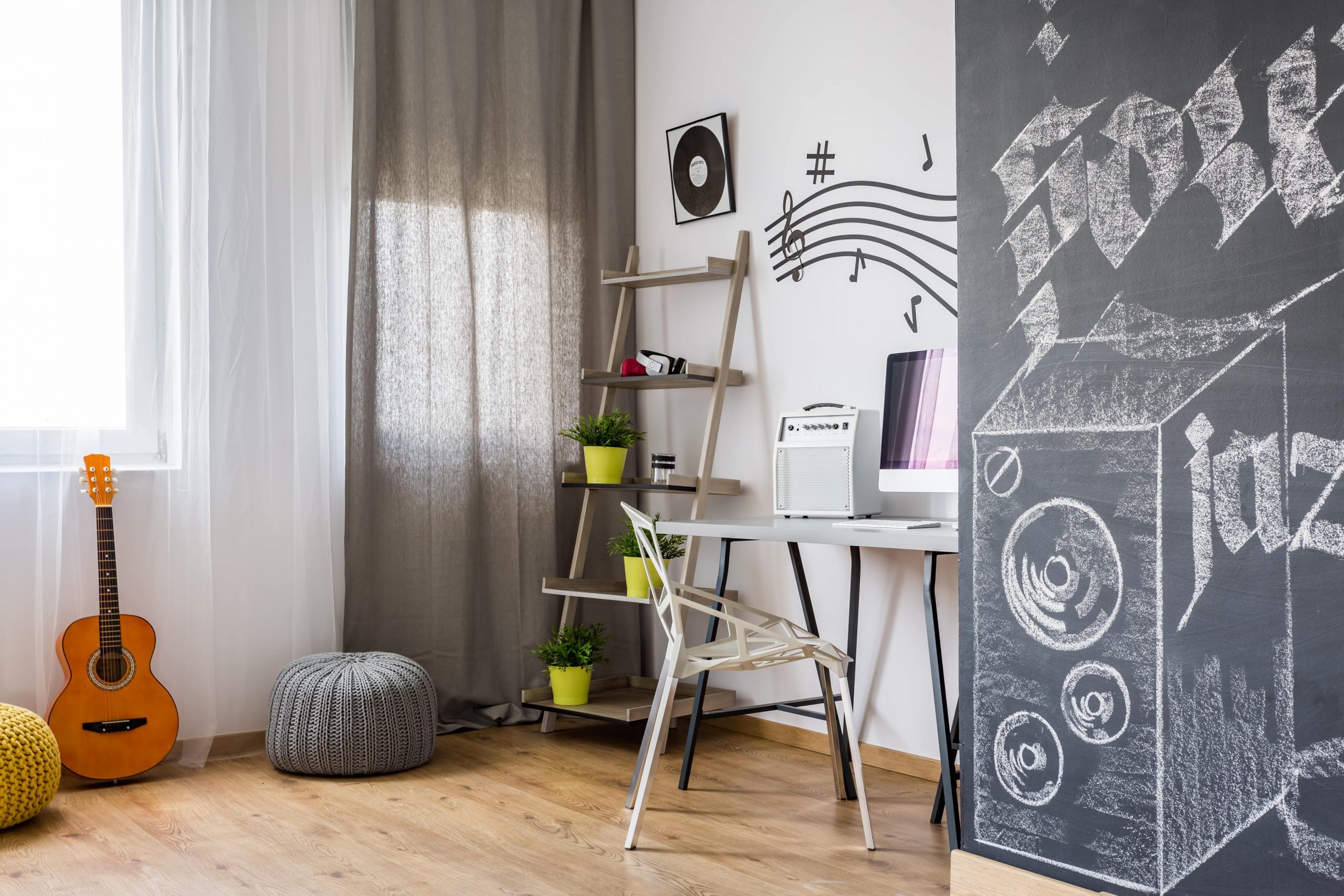
Creating a music area within your home can pay off for both amateurs and pros. Whether you play an instrument, make music digitally, or simply like listening to your favorite tunes, a dedicated space enhances your creative experience and provides a refuge for artistic expression. A well-designed music room creates a setting that fosters creativity, improved sound quality, and lower noise for other family members. There are many factors to take into account from picking the appropriate space to configuring appropriate soundproofing and choosing necessary furniture and equipment. Fortunately, you can create a personal music refuge from an everyday area with careful design and some inspiration. This page will walk you through the key actions to let you create a sound-friendly, practical, and elegant music room right at home.
Choosing the Right Location
Finding the right spot in your home is the first step in setting up a music room. The best place for this would be one that’s big enough to hold your instruments, sound gear, and any extra furniture. Depending on what you need and how big your home is, extra bedrooms, attics, basements, or even large closets could be great options.
When you choose the spot, think about how sound will move and how soundproof it is. Stay away from areas close to bedrooms or offices, which are often used places. If at all possible, pick a room with more walls and fewer windows to help with the sound and keep it from escaping. Most of the time, a solidly built rectangular room will have better sound quality than an open-plan or oddly shaped room.
Air flow and lights are also important. Sound quality is important, but natural light and airflow may make your music room feel more comfortable and nice. Pick a spot that has a good mix of atmosphere and usefulness for the best results.
Soundproofing and Acoustic Treatment
Once you’ve chosen the place, the next step is to minimize sound leakage and improve acoustics as much as possible. Acoustic treatment makes the sound inside the room better, and silencing keeps noise from escaping and bothering other people.
To block out noise, start with the basics: weatherstripping doors, closing gaps around windows, and hanging thick shades. You can make things look fancier by adding insulated walls, foam padding, or even double drywall. A thick mat or rug can help cut down on sound and soak up the noises of instruments.
Room sound balance is the goal of acoustic treatment. Acoustic foam panels, bass traps, and diffusers are all great ways to get rid of sounds and improve clarity. Putting them on the walls and ceilings on purpose will give you better sound whether you’re recording, training, or just listening to music.
It’s not just about how loud something is that makes a sound good. By spending money on the right acoustics and silencing, you can create a space where every note sounds true.
Furnishing and Equipment Setup
Your music room will mostly work based on how well it is organized and the quality of the furniture you have in it. Start with the basics: comfortable chairs, a sturdy desk or table for your recording gear, and places to store your instruments and other gear. Shelves, pegboards, or instrument racks that are placed on the wall may help to keep things in order while showing off your gear.
If you work online or as a producer, you should think about getting monitor stands, comfortable seats, and the right way to organize your cables. To get proper sound, place the studio speakers so that they are a triangle shape from where you are listening at ear level. Acoustic separation pillows behind the speakers also keep movements from changing the sound.
Make sure that musicians can quickly get to metronomes, tuners, music stands, and any amps or pedals they need. Sort the wires and tools so they don’t get in the way. Also, think about relaxation. Add some personal touches, like a couch, a chair, or art, to make the room look good and inspire you.
Do not forget about lighting. A mix of atmospheric, job, and background lights will help with both focus and mood. A stylish light next to your desk or music stand makes the space look nice and be useful.
Enhancing Creativity and Personalization
The music and design in your music room should reflect your tastes. Inspiring people to be creative can be greatly improved by adding character and motivation. The space will look better with posters of your favorite singers, old records, or framed words that inspire you. This is the best place to show off any awards, mementos, or stamps you have.
You might want to add a whiteboard or corkboard for writing down creative ideas, chord progressions, or songs. Along with being helpful, a chalkboard wall can also be a source of rustic art ideas. Plants, especially ones that do well in shaded light, may also bring more life and energy to the space.
Adding a small area for live streaming or recording could be helpful if you teach music or make content. With a few simple camera setups, good lighting, and a background, you can turn your music room into a virtual school or small studio for making content.
In the end, a music room is more than just a place to work. It’s a place where imagination, motivation, and desire come together. Make it unique for you.
Conclusion
Creating a music room in your home is a fun project that requires technical know-how, planning skills, and creative thinking. You can make a space that encourages practice and excitement by carefully choosing the right location, spending money on insulation, putting things in a way that makes sense, and adding your own personal touches. As you write symphonies, play with friends, or just enjoy your favorite songs, a well-designed music room can help you get better at music and make your daily life more fun.
